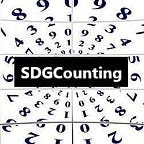Use of Geospatial Data to Support Covid-19 Response
SDGCounting UN World Data Forum
This post is part of a series highlighting sessions from the 2020 UN Data Forum. Watch every session or read our summary.
Summary: This session convenes experts from global, regional and national agencies to share their views on the evolution of geospatial data production, management, integration and dissemination, with a focus on COVID-19 response and the 2030 Agenda for Sustainable Development. Panelists discuss novel approaches to producing and using core geospatial data layers — population distribution, administrative base maps of settlements and subnational boundaries, and development infrastructure and services — that, without targeted interventions, are unlikely to be generated at the extent required to achieve the SDGs.
Speakers
- Juan Oviedo, Departamento Administrativo Nacional de Estadistica
- Argyro Kavvada, NASA
- David Sengeh, Government of Sierra Leone
- Dennis Mwaniki, UN-Habitat
- Prince Clem Ikanade Agba, Nigeria National Steering Committee
- Rolando Ocampo Alcantar, UN Economics Commission for Latin America and the Caribbean
- Sandra Liliana Moreno, Departamento Administrativo Nacional de Estadistica
- Lo Blair-Freese, Bill and Melinda Gates Foundation
Key Takeaways
- Organizations are using partnerships for geospatial technology — sharing information and findings with other institutions, working with governments to identify local and national needs and leveraging evidence-based data gathered through partnerships — to inform decision-making.
- Columbia’s experience with geospatial data has helped identify who is the most vulnerable to COVID-19.
- In Nigeria, local administrative data has helped provide information on the spread of COVID-19.
- In Sierra Leone, better data (particularly population data) is crucial to help inform governmental education decisions during COVID-19; Sierra Leone is working to gather population data and estimates and school data to know where to build schools and at what levels.
bp
